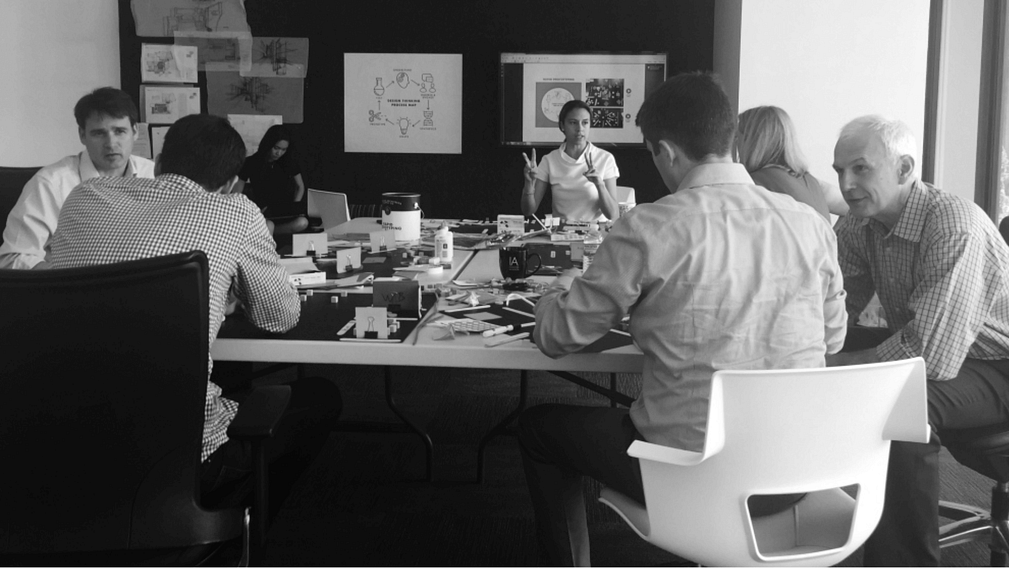Participatory Design: Why and How?
By Grzegorz Kosmal, AIA, LEED AP BD+C | Design Director
Globally, statistics show that 62% of employees are not engaged with their work and feel disconnected from the workplace. Moreover, many employees are reluctant to fully return to the workplace, or having returned, feel let down—the anticipated sense of community, well-being, and work-life harmony unfulfilled. What effective actions can reverse this trend? Is there a remedy?
We think there is. A fundamental factor that binds people together within a mutually supportive and engaged community is decision-making—what, how, and by whom. The design process presents a dynamic opportunity to influence and strengthen the sense of community and well-being at the workplace by delegating a major portion of decision-making to members of the workforce. The designer engages a much wider spectrum of stakeholders for a longer period of time than usual. Known as participatory design, this approach empowers the workforce as co-collaborators in the design process, positively transforming the workplace community and its environment while signaling a fundamental shift in the role of the designer.

Why Take This Approach
Arguably, the most important asset of any enterprise is its workforce and the culture it creates. At the heart of that culture are the shared values, goals, aspirations, and actions of the employee community.
Although designers and enterprise leadership often believe they understand the workplace culture, its motivators and challenges, the only way to know with accuracy is to ask the workplace community. This inevitably reveals that perceptions and interpretations of issues and pain points, as well as positive factors within the organization, differ greatly depending on role and position. It follows that creating the optimum workplace requires unprecedented workforce participation in the design process.

How Does it Work?
Engaging a wider spectrum of participants unsurprisingly raises concerns about the efficiency of the design process: admittedly, it is easier to delegate all decisions to a core steering group, trusting them to make the right choices. Yet working with the workforce population offers greater potential rewards. Participatory design directly engages employees in the process of designing their work environment. This collaborative approach captures their collective wisdom, creativity, and aspirations toward a workplace that best meets user and enterprise goals. The observations, expectations, and requirements of the workforce and stakeholders are shared and explored.
The perspectives of those actually working in the space drive the decisions that shape the new space. Moreover, the power to influence the design creates a user connection (often an emotional identification) to the workspace and its community. It emphasizes mutual respect and empathy among colleagues, strengthens user self-esteem, and creates a sense of equity, ownership, and belonging—all contributors to well-being.
Drawing on direct user reports has long been a powerful contributor to any design process. The technology industry (particularly UX design), is a good example where user participation is essential to the development of a wide range of products. Designing for the user experience in the built environment is no different, with the intent of creating the best possible work environment.


The Designer’s New Role
The use of participatory design marks a shift in the role of the designer to that of facilitator, whose intent is to understand and identify the current set of parameters around the workplace culture’s unique relationships and conditions. It is a shift to designing with rather than for the client. The facilitator questions, listens, and learns, which calls for empathy and humility—qualities that have recently gained traction in the workplace. The designer no longer approaches the project as the expert imposing historically validated decisions a priori on the new design but as a true collaborator initiating an exchange of ideas with the workforce.
Interaction with the employees includes conversations, work sessions, vision sessions, and more, leading to an understanding and identification of what works and what doesn’t work. Anything that causes frustration can be a design opportunity. This process taps into the workforce's knowledge, insights and values, the network of relationships it depends on, and how it interacts with the built environment.
Geared to capture every aspect of the culture, collaboration as a discovery process sets the course for a design that will celebrate the workforce and the workplace while resolving pain points and addressing aspirations. The facilitator/designer must understand and absorb what has been learned from the workforce. The overall process requires time, patience, and multiple feedback loops.
The Design
From the vantage point of knowledge, the partnership of workforce and designer creates a programmatic response to the layers of needs and their assigned priorities focused on the routines, rituals, and boundaries governing the workplace, relationships, and processes. Maslow’s hierarchy of needs (physiological needs and the needs for security and safety, love and belonging, esteem, and self-actualization) provides the framework for the design of the space.
Together, the workforce and the designer evaluate and adjust the program. Rapid prototyping, joint planning sessions, change management, and the co-creation of EGD designs are among the means at their disposal. All design decisions are supported by the report of the critical mass—the workforce and its leadership. Solutions and design features are tested in a virtual environment to arrive at the final design. Then the build-out begins.
At project completion, a manual created for the client explains how the space was created and its intended use now and for the future. Yet, the interaction between designer and workforce will continue for the life of the space through requested modifications based on employee observations, change management, new enterprise requirements, and growth.

Additional Benefits
Once the new workplace that strengthens culture and supports functionality is established any gap between the organization's aspirational website statements and the reality of day-to-day operations should be minimal, underlining the organization’s authentic values and goals. And, since the culture of an enterprise differentiates it from competitors, the new space profoundly influenced by the workforce will attract top-notch talent.
In addition, those quiet quitters we hear so much about who do not feel engaged, connected, appreciated, or recognized for their contributions will benefit from a design they have influenced that is focused on opportunity and engagement in an environment of physical safety and emotional comfort.
Conclusion
Understandably, in a climate of tight deadlines and fees, few clients may want to engage in such an aggressive process of introspection and discovery. Yet an interpretation by the few of what the many need and require ultimately misses the mark (we’ve seen that happen time and again) because leadership’s means to probe and understand workforce pain points, sentiments, and aspirations are limited and often inaccurate.
Participatory design is not new, although it has been applied primarily to the design of products and community spaces under the name community design. Applied to workplace design, it has the potential to massively transform the workplace community and its environment through an inclusive process that will strengthen community, inspire employee connection to colleagues and ownership of the work environment, nurture well-being, streamline productivity, and attract talent.

